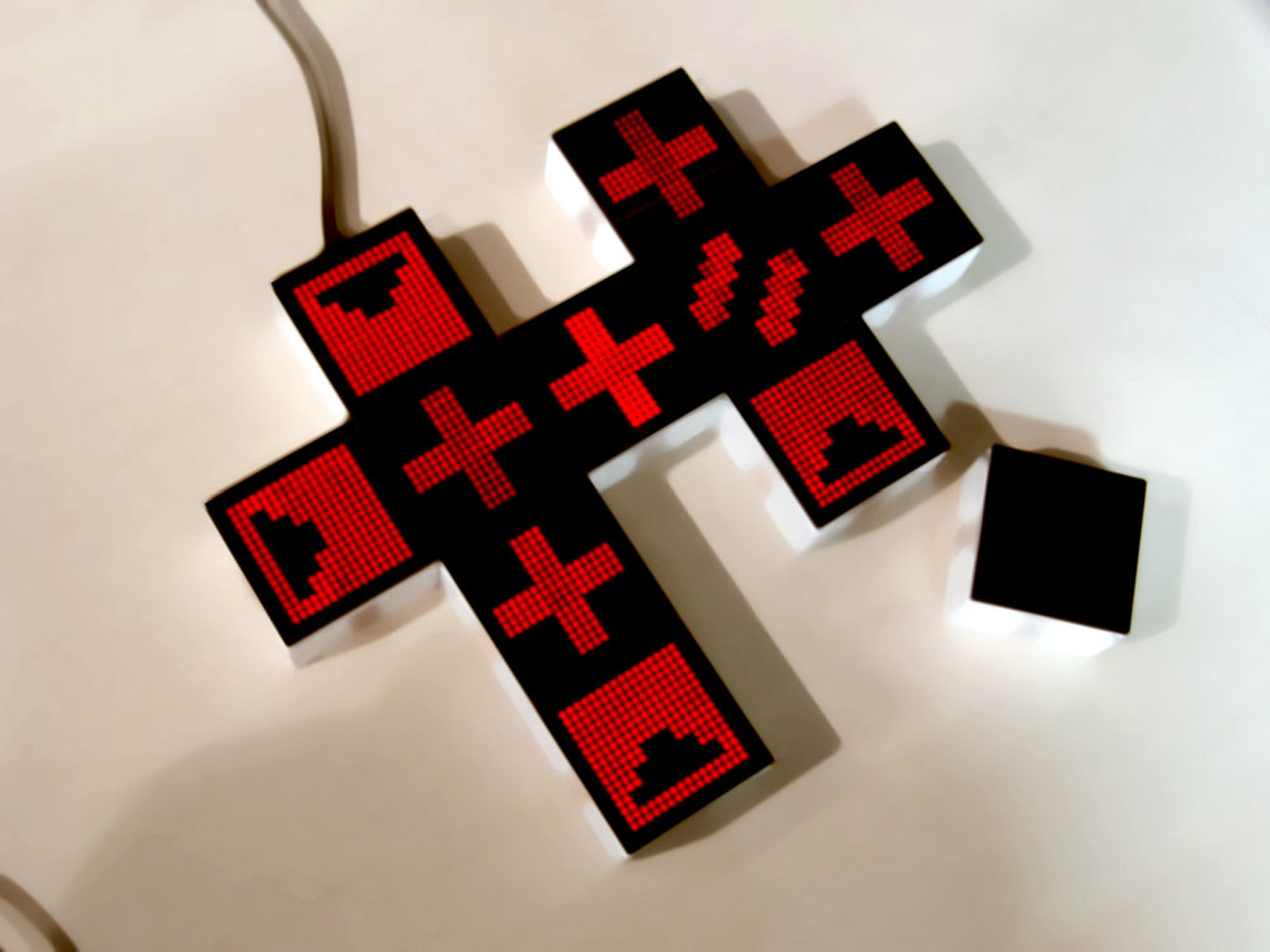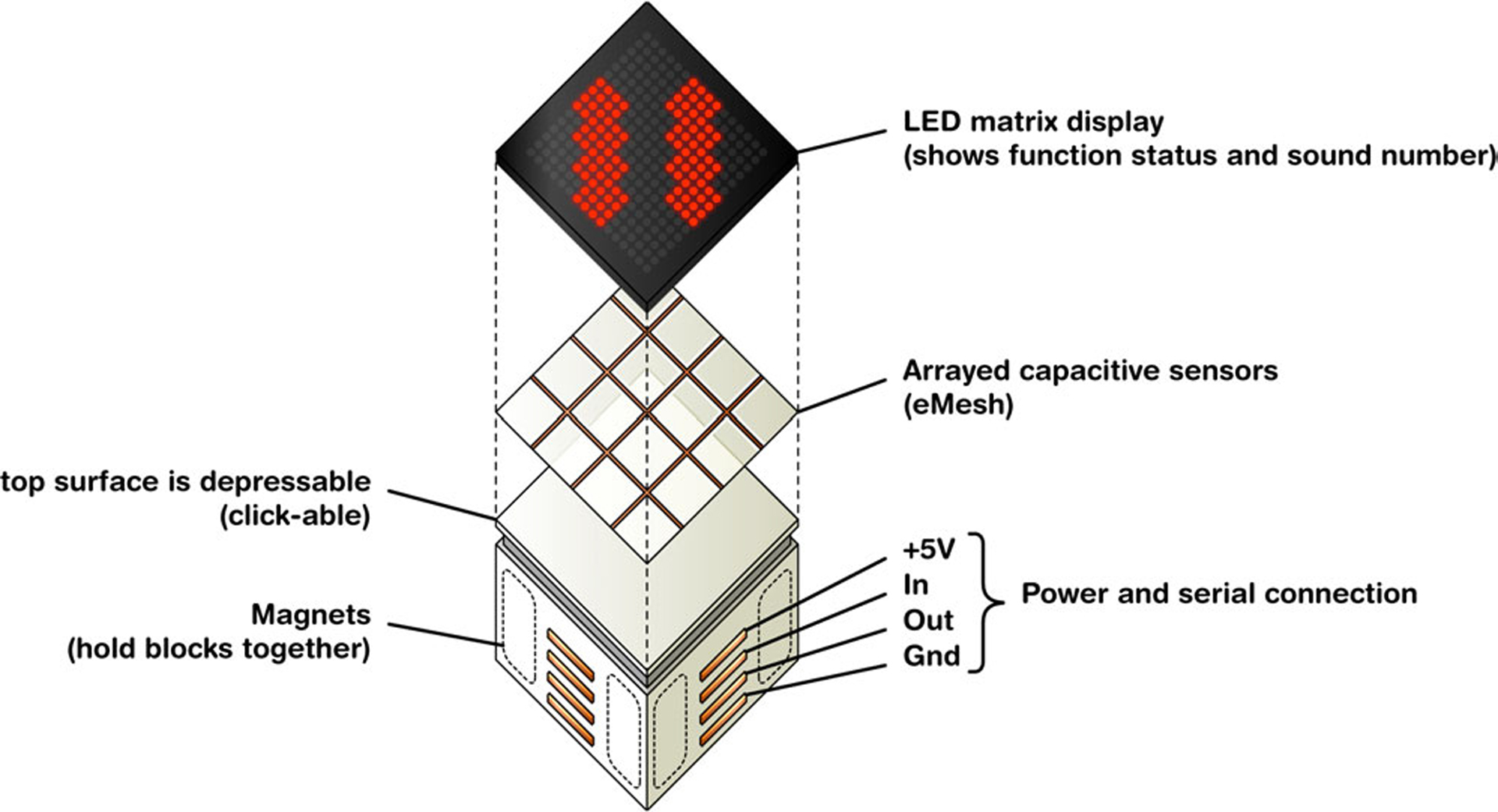“Block Jam” by Newton-Dunn, Nakano and Gibson
Conference:
- SIGGRAPH 2002
-
More from SIGGRAPH 2002:


Type(s):
E-Tech Type(s):
- Audio and Music
Entry Number: 67
Title:
- Block Jam
Presenter(s):
Description:
Abstract
Block Jam is a musical interface controlled by the arrangement of 24 tangible blocks. By positioning the blocks (Figure 1), musical phrases and sequences are created, allowing multiple users to play and collaborate.
Overview
Block Jam takes advantage of both graphical and tangible user interfaces. Each block has a visual display and two modes of input, clickable and gestural. Each Block contains a sound group that can be chosen via the gestural input. The clickable input changes a block functionally (e.g. start or stop a sequence). Thus musically complex and engaging compositions can be rapidly assembled.
The tangible nature of the blocks and the intuitive interface promotes face-to-face collaboration, and the presence of the GUI allows for remote collaboration across a network. By creating a combination of a tangible and a visual language, we are able to create endless meaningful musical structures in a novel and intuitive way.
Goals
We believe in a future where music will no longer be considered a linear composition, but a dynamic structure, and musical composition will extend to interaction. We also believe that the divisions of composer, performer, and audience will be blurred, by the introduction of such media.
Our second aim is to put the group experience back into music. We understand that the musical experience changes with technology. Musical technology allows greater control and more possibilities than ever before and greater access to the beginner or novice. The way we receive and listen to music is also changing, not just in terms of Low-Fi to Hi-Fi or Phono to Tape to CD to MD to MP3, but also in terms of experience, music is moving from a social experience to a personal experience, from campfire to orchestra to living room to Walkman. Degrees of separation have occurred between the composer and the performer, the performer and the audience. This trend continues. Inversely, technology is moving towards community, towards the group, towards the network.
Conclusion
Hence, we would suggest a need for a collaborative interactive music technology. We are not suggesting a musical toy or a novel musical instrument, but a discreet networked controller allowing multiple users the ability to control or modulate different elements of a single musical construct, to create a shared musical experience.
We envision a musical experience that can be shared equally by the novice or the musically adept, retaining a notion of author, of composer, yet allowing the user enough creative flexibility to add their own stamp. When a user’s action is contextualized by the actions of other users, the experience will become shared, and perhaps be not so far from the campfire of before.
Other Information:
References
POUPYREV, I. “Augmented Groove: Collaborative Jamming in
Augmented Reality.” in SIGGRAPH 2000 Conference Abstracts
and Applications, ACM Press, NY, p.77
GORBET, M., ORTH, M., AND ISHII, H. “Triangles: Tangible
Interface for Manipulation and Exploration of Digital
Information Topography.” Proceedings of SIGCHI1998: ACM
Press
JUN REKIMOTO. “SmartSkin: An Infrastructure for Freehand
Manipulations on Interactive Surfaces.” to be published in ACM
SIGCHI2002





